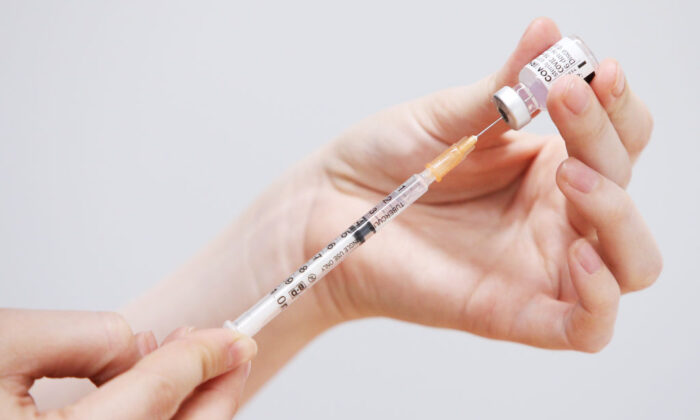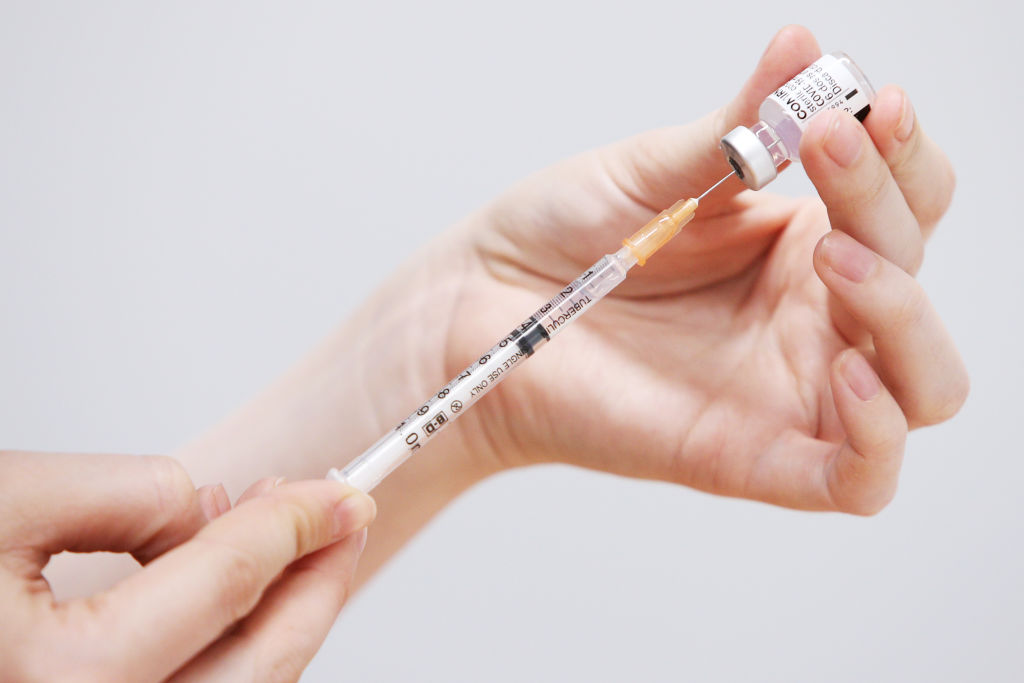Heart Scarring Detected Over 1 Year After COVID-19 Vaccination: Studies
Two long-term studies found signs of fibrosis in patients who suffered heart inflammation after getting a COVID-19 shot.
Heart scarring was detected more than one year after COVID-19 vaccination in some people who suffered myocarditis following receipt of a shot, researchers reported in new studies.
A third of 60 patients with follow-up cardiac imaging done more than 12 months after their myocarditis diagnosis had persistent late gadolinium enhancement (LGE), which is, in the majority of cases, reflective of heart scarring, Australian researchers reported in a preprint of a new study, published on March 22.
Myocarditis is a form of heart inflammation.
The median time from receipt of a vaccine to follow-up imaging was 548 days, with the longest interval being 603 days.
“We found that the incidence of persistent myocardial fibrosis is high, seen in almost a third of patients at >12 months post diagnosis, which could have implications for the management and prognosis of this predominantly young cohort,” the researchers wrote.
Researchers in one of the previous papers, for instance, found that LGE was a “powerful prognosticator” of adverse outcomes in myocarditis patients.
Before the new testing, nine patients were determined to definitely have myocarditis, and 58 patients were labeled as probably having myocarditis. The findings of persistent LGE resulted in reclassifying 16 of the cases from probable myocarditis to definite myocarditis.
Exclusions included patients who were pregnant or allergic to agents used in gadolinium testing.
Among a subset of 20 patients who underwent imaging shortly after vaccination, 19 had LGE. In follow-up imaging, LGE was no longer visible in 10 of those patients. In five, it was reduced, but in four it was unchanged.
Andrew Taylor, a professor at Monash University’s Central Clinical School, and his co-authors conducted the study by recruiting patients who were diagnosed with myocarditis associated with COVID-19 vaccination between August 2021 and March 2022. The patients were invited to undergo imaging at Alfred Hospital or Royal Children’s Hospital in Melbourne, Australia.
The study population with follow-up imaging included 44 adults and 16 adolescents.
Most of the patients had received a Pfizer-BioNTech shot. A minority had received a Moderna or AstraZeneca vaccination. The companies did not respond to requests for comment.
Another Paper
In the other recent paper, researchers in Canada reported finding about half of patients referred for imaging due to possible post-vaccination myocarditis had persistent LGE in follow-up imaging.
Overall, 60 patients were included in the retrospective study. Of those, seven reported persistent symptoms.
In a subset of 21 patients for whom follow-up MRIs were available, 10 had persistent LGE, the researchers said. On the other hand, function of the left ventricle, which pumps blood, had normalized in all patients.
“However, the significance of LGE is uncertain in patients post-myocarditis with recovered normal left ventricular systolic function,” the researchers said. They called for additional studies to evaluate patients with persistent LGE and a recovered left ventricle.
The study included adult patients who were referred to a hospital network with suspected myocarditis and had new cardiac symptoms such as chest pain within 14 days of COVID-19 vaccination. The patients all received either the Pfizer or Moderna shot.
The authors declared no funding and listed only one competing interest, that an author is an associate editor of the journal.
The corresponding authors for the two papers did not respond to requests for comment.
“My concern from reading these two studies is that myocardial damage and scarring is present in a significant number of COVID vaccine injured individuals at up to 18 months after vaccination. This suggests potential for permanent heart damage from the vaccines,” Dr. Danice Hertz, the research lead for the U.S. group React19, told The Epoch Times in an email. “The long-term implications are not yet known but need to be studied carefully.”
Earlier Findings
The new papers add to earlier studies, which found that LGE persists for months in some people following a COVID-19 shot.
Symptoms have also persisted in some patients with post-vaccination myocarditis.
This article has been archived for your research. The original version from Epoch Times can be found here.






